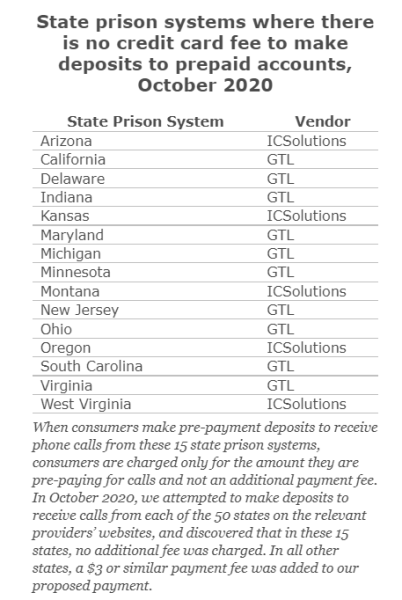Economy Items
The Price of Prisons: Examining State Spending Trends, 2010 - 2015
The Company Store: A Deeper Look at Prison Commissaries
To bring some clarity to this bread-and-butter issue for incarcerated people, we analyzed commissary sales reports from state prison systems in Illinois, Massachusetts, and Washington. We chose these states because we were able to easily obtain commissary data, but conveniently, these three states also represent a decent cross section of prison systems, encompassing a variety of sizes and different types of commissary management.
U.S. economy’s current growth will peak in 2019
The U.S. economy has been on a long, slow upward trend for eight years, but a Cornell economist predicts that – like all good things – the steady growth will soon come to an end, likely by the end of the year.
It won’t be a disastrous scenario like the 2009 recession, but rather a garden-variety reaction to the Federal Reserve raising interest rates and, in turn, interest-sensitive sectors cooling off, he said.
Global Financial Stability Report: Lower for Longer
State of the Union 2019: How Americans see major national issues
Following a political standoff that briefly delayed his annual speech to the nation, President Donald Trump will deliver his second State of the Union address on Tuesday night. The speech comes amid a debate between Trump and congressional Democrats over border security – one that recently led to the longest federal government shutdown in history.
As Trump’s speech takes the spotlight, here’s a look at public opinion on important issues facing the country, drawn from Pew Research Center’s recent surveys.
The Economies Adding the Most to Global Growth in 2019
The Economies Adding the Most to Global Growth in 2019
Global economics is effectively a numbers game.
As long as the data adds up to economic expansion on a worldwide level, it’s easy to keep the status quo rolling. Companies can shift resources to the growing segments, and investors can put capital where it can go to work.
At the end of the day, growth cures everything – it’s only when it dries up that things get hairy.
Breaking Down Global Growth in 2019
Best States 2019: Ranking Performance Throughout All 50 States
Some states shine in health care. Some soar in education. Some excel in both – or in much more. The Best States ranking of U.S. states draws on thousands of data points to measure how well states are performing for their citizens. In addition to health care and education, the metrics take into account a state’s economy, its roads, bridges, internet and other infrastructure, its public safety, the fiscal stability of state government, and the opportunity it affords its residents.
Global Growth to Weaken to 2.6% in 2019, Substantial Risks Seen
Emerging, developing economies’ growth to pick up to 4.6% in 2020 from 4% in 2019; expansion vulnerable to trade, financial disruptions
Global economic growth is forecast to ease to a weaker-than-expected 2.6% in 2019 before inching up to 2.7% in 2020. Growth in emerging market and developing economies is expected to stabilize next year as some countries move past periods of financial strain, but economic momentum remains weak.
Mandatory Spending in Fiscal Year 2020: An Infographic
Economy at a Glance - United States
Discretionary Spending in Fiscal Year 2020: An Infographic
Revenues in Fiscal Year 2020: An Infographic
Annual Survey of State Government Finances Summary: 2019
The Federal Budget in Fiscal Year 2020: An Infographic
Gross Domestic Product by State, 4th Quarter 2020 and Annual 2020 (Preliminary)
The 2020 Long-Term Budget Outlook
Since You Asked: Can Correctional Facilities Negotiate Phone Contracts That Prohibit Deposit Fees? (Yes! Many do.)
Global Economic Prospects: Slow Growth, Policy Challenges
Following its weakest performance since the global financial crisis, the world economy is poised for a modest rebound this year– if everything goes just right.
Hanging over this lethargic recovery are two other trends that raise questions about the course of economic growth: the unprecedented runup in debt worldwide, and the prolonged deceleration of productivity growth, which needs to pick up to bolster standards of living and poverty eradication.
Rates for Interstate Inmate Calling Services
In this document, the Commission continues to comprehensively reform inmate calling services rates to ensure just and reasonable rates for interstate and international inmate calling services. Specifically, the Commission proposes to lower the current interstate rate caps to $0.14 per minute for debit, prepaid, and collect calls from prisons and $0.16 per minute for debit, prepaid, and collect calls from jails. The Commission also proposes to cap rates for international inmate calling services, which remain uncapped today.
The Top 50 Most Valuable Global Brands
Visualizing the Top 50 Most Valuable Global Brands
For many brands, it has been a devastating year to say the least.
Over half of the most valuable global brands have experienced a decline in brand value, a measure that takes financial projections, brand roles in purchase decisions, and strengths against competitors into consideration. But where some have faltered, others have asserted their dominance and stepped up for their customers like never before.
Prisons and Penny-Pinching: Finding Budget Savings in the Time of COVID-19
Most Americans Consider Themselves Middle-Class. But Are They?
Chances are that you believe you are in the middle class—nearly everyone in the United States does. Doctors and lawyers believe they are middle-class; so, too, do welders and waiters. In a 2015 Pew survey, only 10 percent of Americans said they considered themselves lower-class and just 1 percent thought they were upper-class.
States’ 2020 Personal Income Growth Was Highest in 20 Years
Every state experienced an uptick in total personal income last year as historic gains in unemployment benefits, federal aid, and other public assistance drove the sharpest annual growth in two decades. Without government support, most states would have sustained declines in personal income—a key economic indicator—as the COVID-19 pandemic took a toll on business activity.


























